Bob and Elsi Sly keep a cherished family tradition alive, crafting pure maple syrup the old-fashioned way on their Hickory Lea homestead in Dexter.
By Cynthia Furlong Reynolds
“Follow your nose, and you’ll find us,” Elsi Sly assures winter guests.
She’s right. Shortly after dusk on a cold, starry night, visitors easily follow the enticing aromas of a wood fire and a sweet treat as they cross patches of snow leading to the Slys’ Sugar Shanty. Open the door, and a fog of evaporating sap and an array of hot dogs, baked beans, and salads promise a one-of-a-kind winter picnic.
The season for maple syrup-making has begun here in Michigan, and, at the ages of 86 and 84, respectively, Bob and Elsi Sly maintain a family tradition that dates back to the days when their relatives were among Michigan’s earliest settlers. “We make maple syrup the traditional way,” Elsi says firmly. “We want our grandchildren [sixteen of them] and great-grandchildren [fourteen at last count] to understand how their family made maple syrup in the old days and ways.”
The Slys have the energy and enthusiasm of people half their ages.
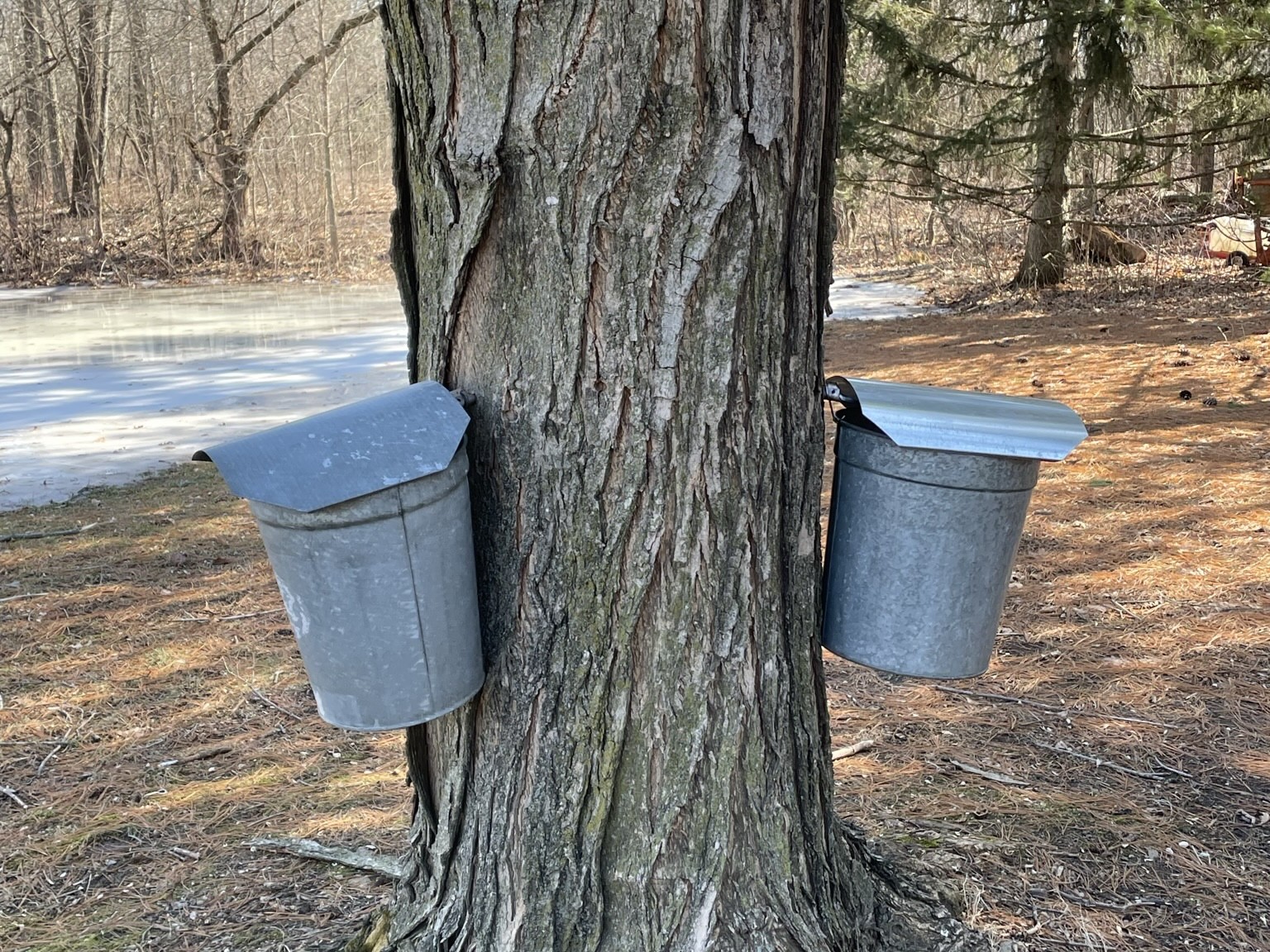
The retired pianist/organist for the Dexter United Methodist Church, Elsi teaches piano lessons, gardens, cooks and bakes for all family gatherings, designs additional scenes and backdrops for her annual (and massive) Christmas village scene, and pursues her interests in the arts. “I can stand a quiet week now and then—but no more than that,” she says firmly. “I always have something to do.”
Bob retired from an engineering career, but treats retirement as a second career, maintaining his acreage, planting gardens, building new projects, and volunteering in the community. Last year he accompanied a church mission trip to Guatemala, installing stoves and water filters in remote mountain village homes. And the Slys frequently travel internationally. They returned from South America in mid-February, just in time to start collecting maple sap.
Building firm family foundations
Four decades ago, the Slys built a pole barn, then a gambrel-roofed house on ten and a half acres they call “Hickory Lea.” (“Lea means meadow.”) They named their homestead for the huge hickory tree that stands in midst of rolling fields, but they were equally delighted to see maple trees.
Their legacy of syrup-making dates back to the early days of the state. In 1830, Bob’s great-grandmother, Samantha Riggs, became a founding member of the Dexter Methodist Episcopal Church. Her husband, Hezekiah, was the first blacksmith in Lima Center. Bob grew up on a farm in Vantown, where seven generations of Slys farmed 480 acres. They made maple syrup during World War II, when the government rationed sugar.
Elsi was raised on a 160-acre dairy farm in Cedar Springs that her family settled in the first half of the 1800s. The Potters raised feed crops as well as milk cows, and they relied on the sap from 500 sugar maple trees to supplement their income. Most years they produced at least 100 gallons of maple syrup, which they sold at their own stand and in local markets. The dark syrup made from the last batch of sap was sold to Aunt Jemima—and resold as ‘maple-flavored syrup.’”
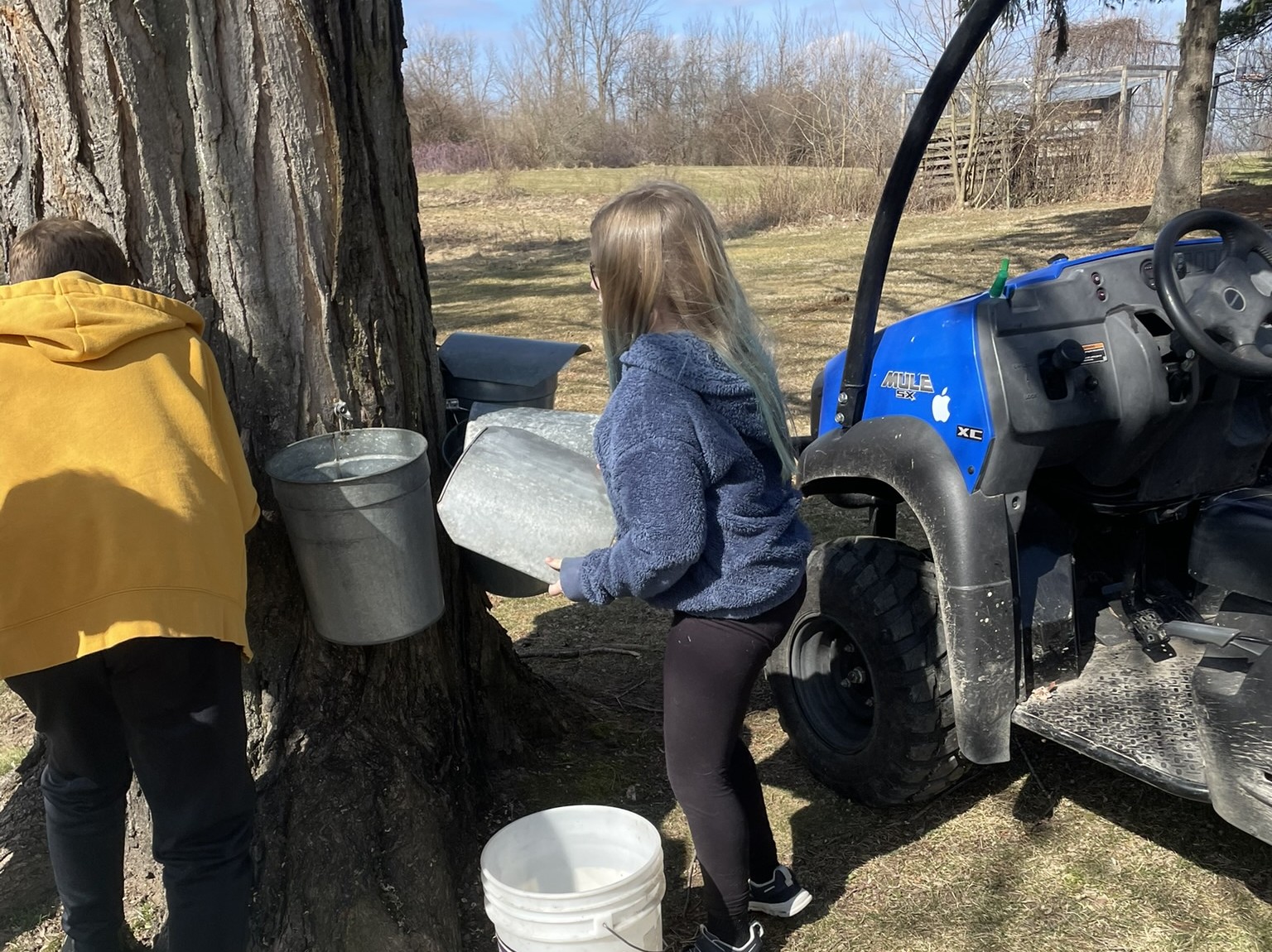
The syrup season is short—only two to four weeks—but intensive. Sap starts running when daytime temperatures reach forty degrees and evening temperatures are below freezing. “The early sap is the best—light-colored, with the highest sugar content,” Elsie explains. “The later sap is darker and less sweet.”
In one of Elsi’s happiest childhood memories, she is riding on the back of a tractor, watching the big wheels lurch over the mud holes. When her father put on the brakes, family members jumped off the wagon, grabbed buckets, and traded them for sap-filled buckets. They dumped the sap into the trailer’s 200-gallon vat and continued on to other trees. “It was fun!”
“Dad worked day and night during those weeks, collecting and boiling the sap,” Elsi says. “Like us, he only used firewood that he cut on the farm—and the boiling process requires a lot of wood.” And sleepless nights.
Forty gallons of sap boil down to one gallon of syrup, Bob explains. “That means 39 gallons of water have to evaporate to get that gallon.”
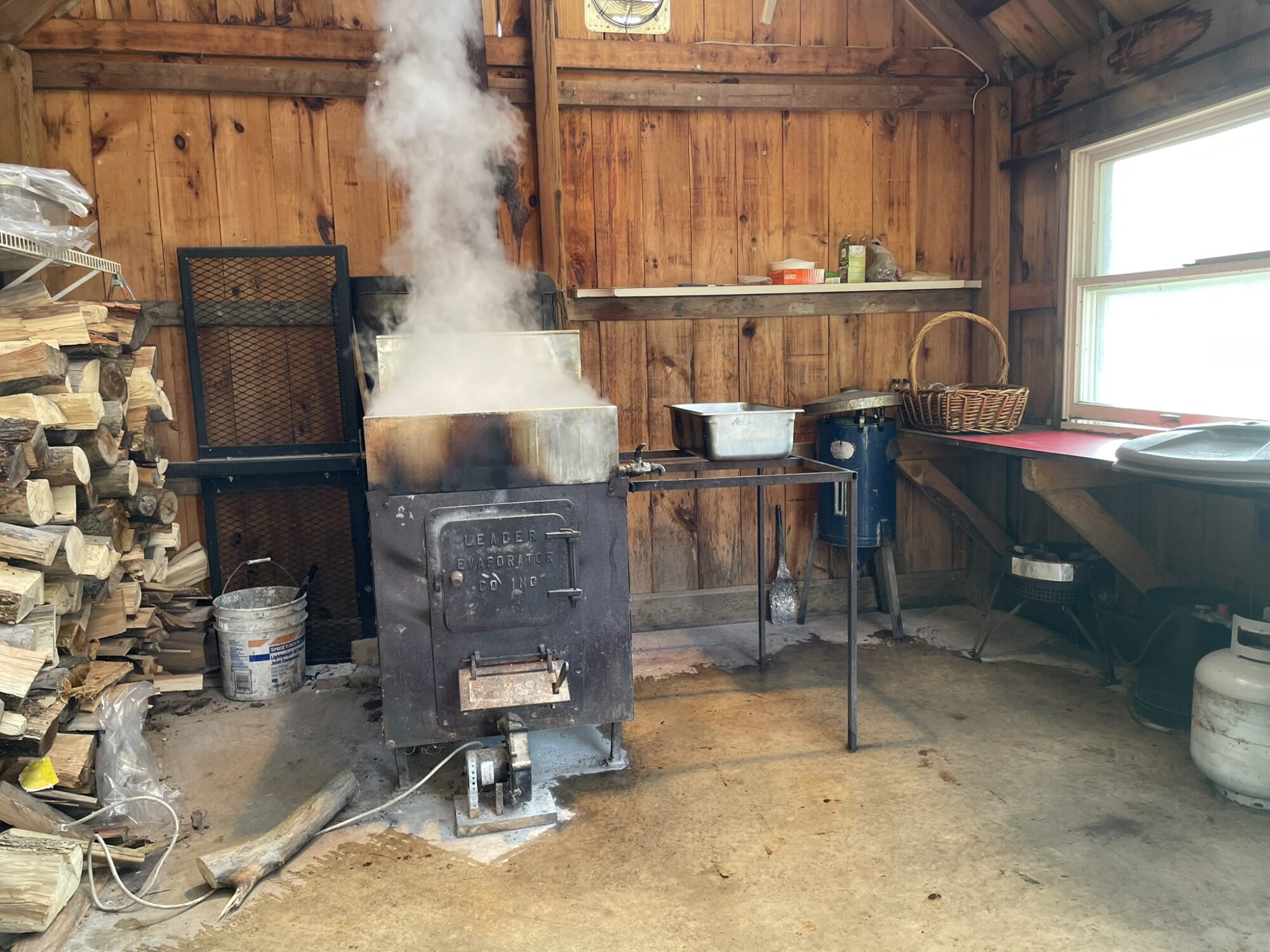
During syrup season, the Potters’ schedule was carefully orchestrated: Elsi’s father fed the evaporators’ fires until nine or ten o’clock at night, when her mother replaced him so he could catch a few hours of sleep. He returned to the sugar house at two o’clock in the morning, so his wife could sleep, and when she returned before the sunrise, he left to tend to his dairy herd. The Potters had an old couch in the shanty and a pile of Readers’ Digest magazines to while away the hours. As soon as they were old enough, Elsi and her brother helped—and read those magazines.
The tradition continues
When the Slys’ children were young, the family traveled back and forth to the Potters’ centennial farm in Cedar Springs, to help collect, boil, feed the fires, bottle, and label the maple syrup. “It was very important to us that our kids participated in the family traditions,” Elsi says. When her parents passed away, Bob decided to build their own sugar shanty (“not a shack!”).
As daytime winter temperatures begin to warm, Bob takes his antique brace-and-bit (if grandchildren or guests are present) or an electric drill (for efficiency) to bore as many as five holes in the trunks of the fifty sugar maple trees scattered throughout his property, as well as several additional maples on his neighbors’ lands. For maximum sap, the best place to drill is on the trees’ sunny side, above a thick root or below a large branch.
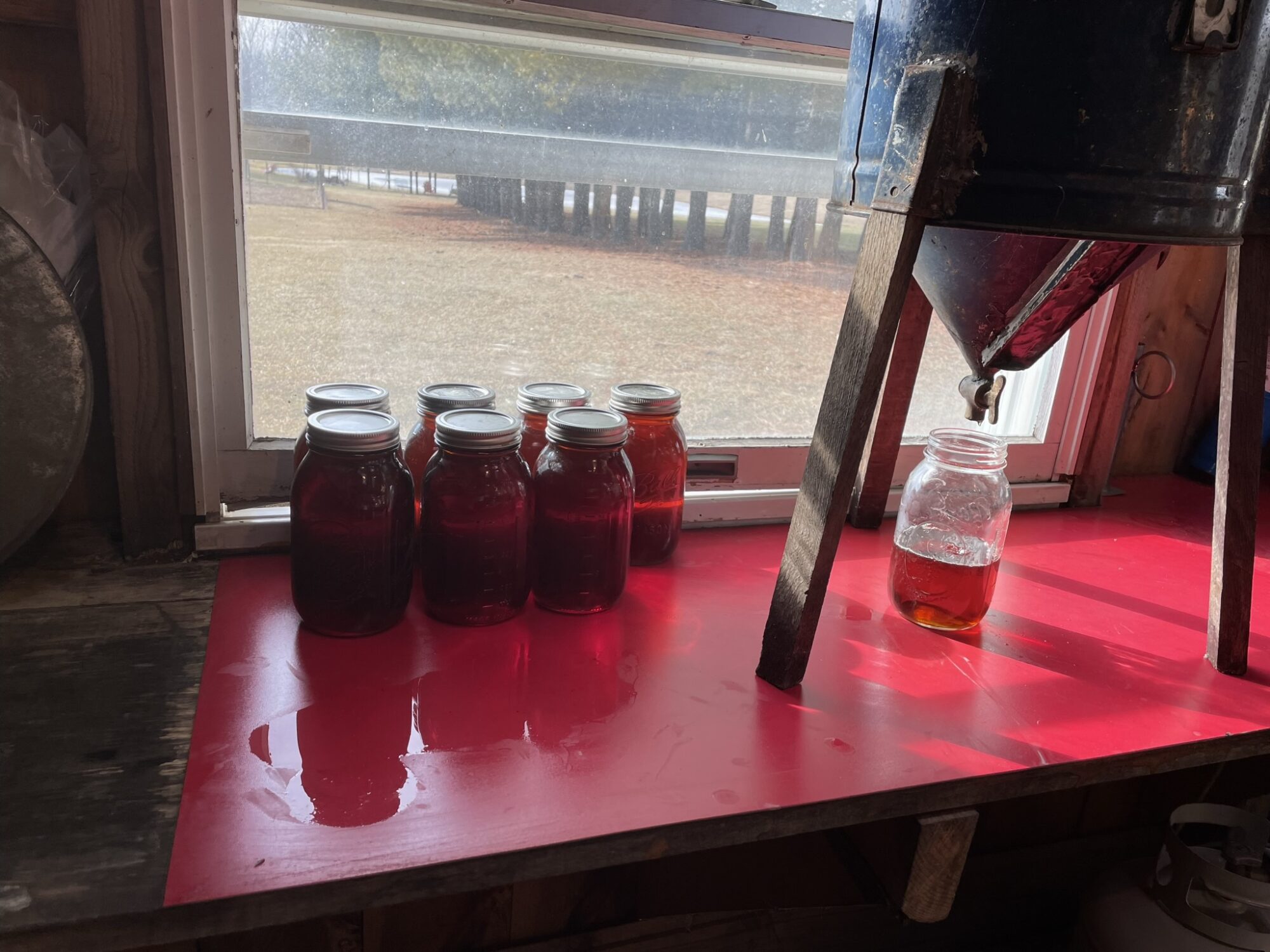
Then he inserts spiles—a type of spigot—into the holes, hangs buckets, and makes daily rounds on his Kawasaki Mule, to collect the sap. “The first run is the best, with the best flavor,” Elsi explains. Gradually, the sap gets darker and the flavor stronger.
The Slys use an antique cream separator, tapered, with a valve at the bottom, to filter the sap three times, removing bugs, twigs, wood chips, and other debris. Then they pour the sap into a twelve-by-fourteen-foot evaporator (“My father’s was five times that size”) over an enclosed wood fire, which burns until the last drop of sap in the batch evaporates. To harvest ten gallons of syrup, the Slys burn about three cords of wood.
“The golden bubbles are beautiful when the syrup is almost ready—and the aroma is out of this world,” Elsi says. “It’s a hard two or three weeks, but it’s very satisfying. We make it fun by roasting hot dogs and inviting friends and grandchildren to join us.”
The process isn’t without danger or adventure. Once, in an effort to speed the evaporation process by producing a hotter fire, Bob and Elsi’s brother Dan decided to try burning old tires along with firewood. “That was not a good idea,” Elsi says curtly.
Bob grins. “The stovepipe got red-hot and the wall behind it started sparking and smoldering. We had to throw buckets full of sap on the wall, to put out the fire. We never did that again!”
During their best year, the Slys’ trees produce 480 gallons of sap, which produces twelve gallons of syrup. One year, they only made one gallon. But the average is eight or nine—”enough for our family’s use and gifts,” Elsi says.
“We do this for the old-fashioned feel and the satisfaction of knowing we appreciate what nature offers us. It’s very important to us that our grandkids know the old ways.
“My motto is: ‘Life is too short for fake maple syrup!’
Photos courtesy of Bob Sly
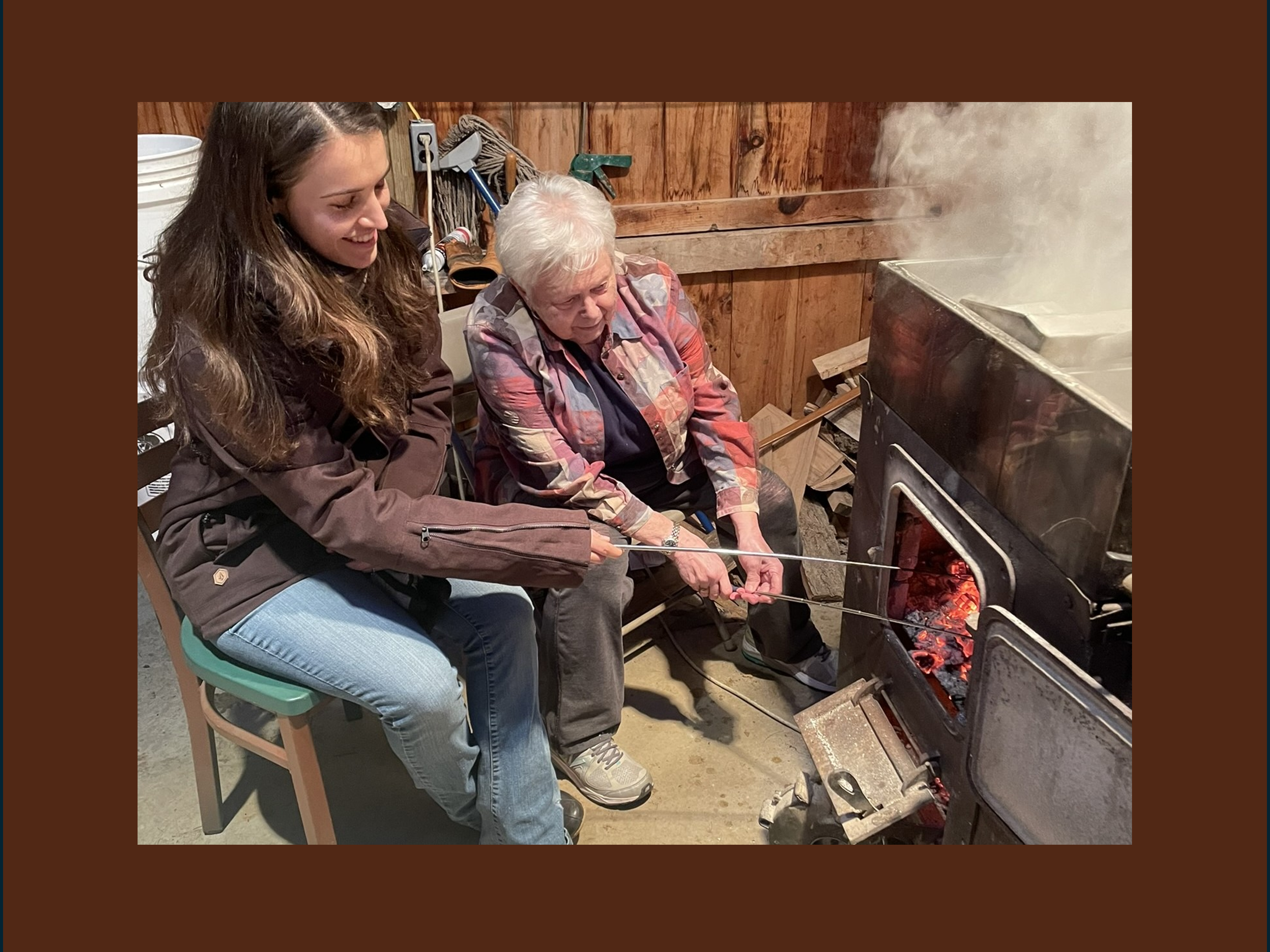




 8123 Main St Suite 200 Dexter, MI 48130
8123 Main St Suite 200 Dexter, MI 48130


